
by Beth Bolles | Feb 14, 2017
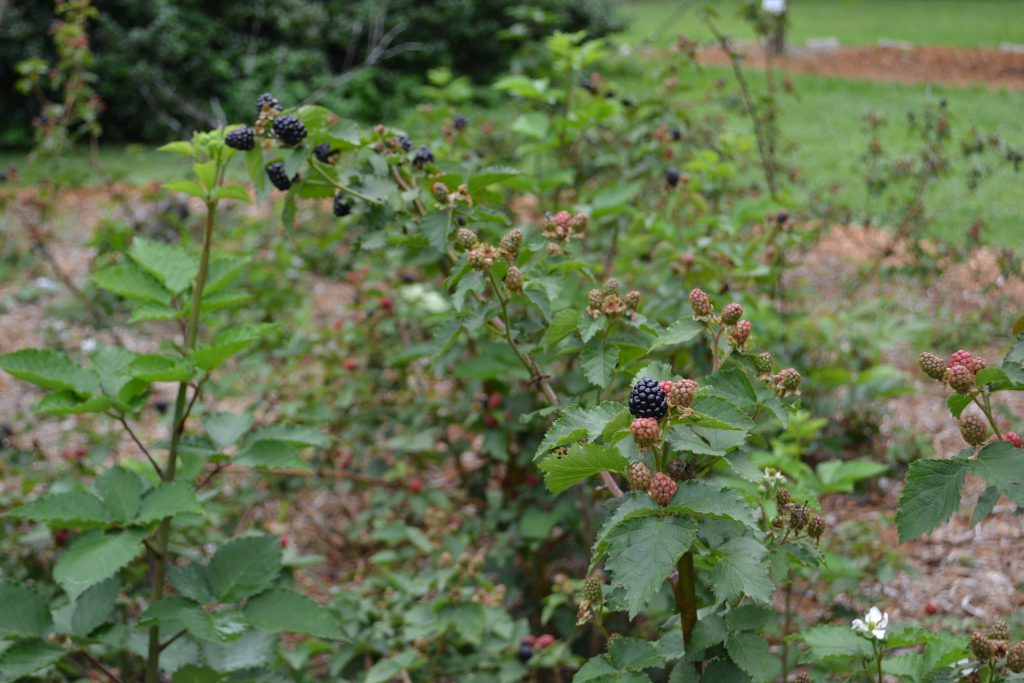
Arapaho blackberry has chill requirements that match those received in our area. Photo by Beth Bolles, UF IFAS Extension
Many of us are enjoying warmer temperatures this winter, but many deciduous fruit crops really need cold temperatures in order to break dormancy for the year. In areas that experience cold temperatures, plants have evolved the ability to survive by slowing growth and protecting sensitive tissues by going dormant. In order to break out of dormancy and begin growth again, plants experience an amount of chill hours (temps between 32 and 45 degrees F) that is suitable for specific areas. In our area, we normally range between 400 and 600 chills hours.
If we choose a fruit plant whose chill requirements match the amount of chill in our area, the plant will generally resume growth when it is safe for buds and tender tissues to develop. If we choose a plant with chill requirements higher than the amount our area receives, then the plant is not signaled to break dormancy and we end up with very sparse growth and no fruit.
So far in the winter of 2016-17, some areas have not received ‘normal’ amounts of chilling temperatures. Common fruit like apple, peach, some blueberries, and certain selections of blackberries may be affected by this by not breaking out of dormancy. This can impact your flower and fruit formation. For commercial growers, it can impact the amount of fruit available and even fruit prices at markets.
Since fruit trees are an investment of time and money, these are not plants that can be easily replanted to match chill hours with changing weather patterns. Perhaps planting fruit crops with a range of chill hours required might be beneficial Your future decisions to grow fruit trees may include crops that don’t rely as much on chill hours to be successful. For more information, please consult the Dooryard Fruit Varieties guide from UF / IFAS Extension.
by Matt Lollar | Feb 11, 2017
There are a number of reasons to remove large limbs from mature trees. The three most common reasons are to either remove dead wood, to keep limbs from interfering with one another and rubbing or growing together, or to keep the tree from having narrow crotch angles. (“Narrow crotch angle” is not a very charming phrase, but it simply refers to branches that grow at angles less than 45° relevant to the trunk.)

Photo Credit: Virginia Cooperative Extension.
Removing tree limbs larger than four inches in diameter should be done with care. Three cuts per limb are often needed to avoid tearing the bark down the side of the tree’s trunk.
- Make the first cut on the underside of the branch about 18 inches from the trunk. Undercut one-third to one-half way through the branch.
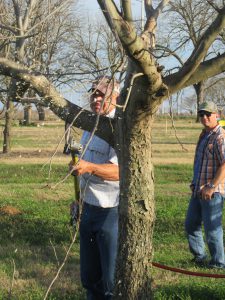
First Cut. Photo Credit: University of Florida/IFAS Extension.
- Make the second cut on the topside of the branch an inch further out on the branch; cut until the branch breaks free.
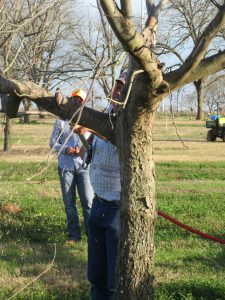
Second Cut. Photo Credit: University of Florida/IFAS Extension.
- Before making the final cut, identify the branch collar. The branch collar grows from the stem tissue around the base of the branch. Make pruning cuts so that only branch tissue (wood on the branch side of the collar) is removed. Be careful to prune just beyond the branch collar, but don’t leave a stub.
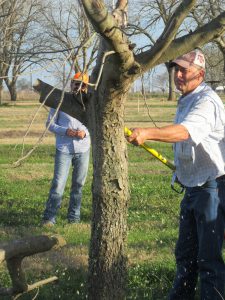
Final Cut. Photo Credit: University of Florida/IFAS Extension.
It is important to take your time whenever working with power equipment and trees in your landscape. You usually only have one chance to get the cut right and you don’t want to injure yourself or ruin your tree.
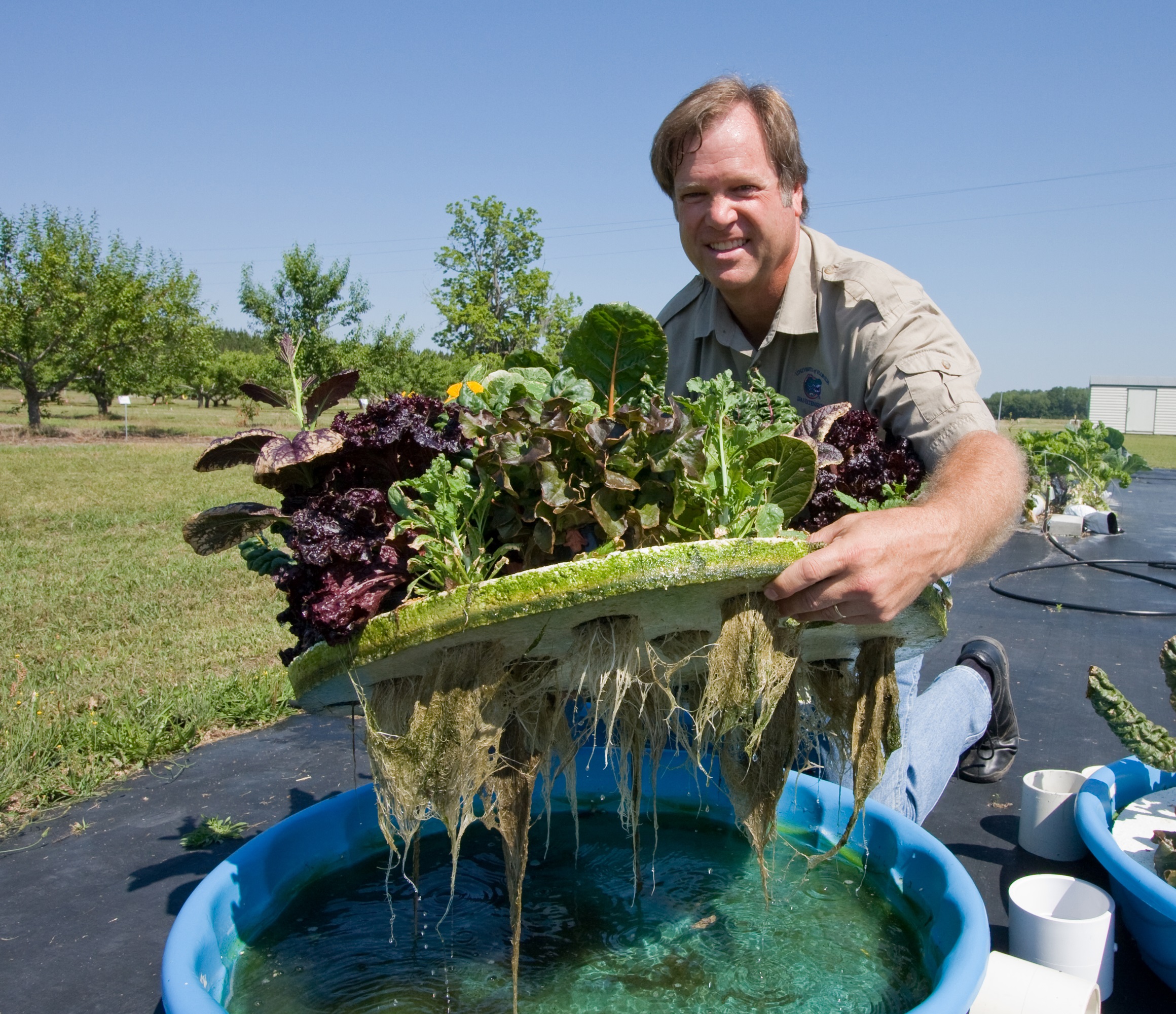
by Matt Lollar | Feb 10, 2017
BASIC HYDROPONIC GARDENING WORKSHOP
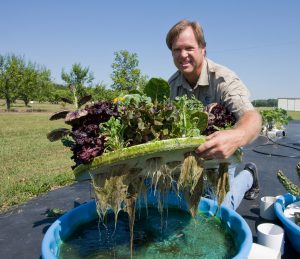
Bob Hochmuth shows one of the many hydroponic growing systems at the University of Florida’s Institute of Food and Agricultural Sciences Live Oak Research and Education Center. UF/IFAS photo: Thomas Wright
-
Learn hydroponic gardening basics.
-
Identify suitable plants for hydroponic gardening.
-
Learn plant food recommendations for hydroponic gardens.
-
Go home with equipment for a small portable hydroponic garden.
WHEN: Tuesday, February 28, 2017
TIME: 5:30 – 7:00 PM (Sign-in begins at 5:00 PM)
WHERE: Jackson County Agriculture Center
2741 Pennsylvania Avenue
Marianna, Florida 32448
REGISTRATION FEE: $20.00 (Includes Mini-Garden Materials and Plants)
Class size limited to 20 people.
Registration deadline Thursday, February 23, 2017
To register or for information, call (850) 482-9620.

by Ray Bodrey | Feb 10, 2017
Yes, even with cool weather setting in, much can be done on the flower gardening front. Let’s kickoff 2017 by being the envy of the neighborhood with flower beds that are rich and vibrant in color.
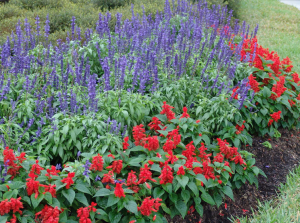
Figure 1: Bedding Annuals.
Credit: Sydney Park Brown, UF/IFAS.
Annual bedding plants are plentiful in variety and come in an array of colors and forms. These plants will highlight home landscapes, whether in beds or in containers on porches, decks and patios.
Annuals are divided into two categories, warm and cold season. Warm season are tender, and damaged by the first frost. Cool season on the other hand, cannot withstand heat or excessive rainfall. Therefore, to be successful with annuals, you must plant at the right time. For this region, late March for the earliest warm season annual planting and late fall for the earliest cool season annual planting is ideal. For the Panhandle, most annuals only live through the season, not the year. For this time of year, some examples of annuals that enjoy cooler temperatures are the pansy, viola, petunia and snapdragon.
When shopping for annuals, pay close attention to how much sunlight the variety will tolerate. This should be displayed on the container. Be sure to plant your annuals under a minimum of partial light. No annual can tolerate heavy shade. Remember when deciding on which variety to purchase, that annuals are an accent piece or supplement to the landscape, and not the focal point. Think of harmony and balance among other plants in your landscape before coming to a decision.

Figure 2: Pot-in-Pot Method.
Credit: Sydney Park Brown, UF/IFAS.
As for care, be sure to water annuals after planting. Provide water on a routine basis until the root system has established. The best way to achieve this is making sure the topsoil layer stays moist early on.
Some gardeners prefer the “pot-in-pot” method with annuals. This method consists of sinking empty pots into the soil and then dropping potted annuals of the same size pot, into the empty pots. This works well for our area for two reasons. Often, our native soils, especially if you live closer to the coast, are not conducive to annual flower bed gardening. By using the pot-in-pot method, rich potted soil encompasses the annual throughout its life span and with no soil bed amendments needed. Also, this can make an otherwise long, laborious gardening day become very short regarding the change out planting from cold to warm season annuals and vice versa.
When supplying water to annuals, be careful with high pressure overhead watering systems, as this can damage petals and can cause bloom rot. A drip irrigation system or handheld hose watering is the best method. Fertilize annuals with a controlled release nitrogen fertilizer, so that a steady supply of nutrients is provided throughout the season. For weed control, mulching with use of pre-emergent herbicides is the best course of action. Depending on the size of landscape, hand weeding maybe the best practice. For pest management use a spot treatment insecticide for the entire flower bed once an insect infestation or disease problems emerge.
The information provided in this article will help your annual bedding plant efforts and in turn reward you with a beautiful flower landscape throughout the year. For more information on annual flower bedding plants, please contact your local county extension office.
Supporting information for this article can be found at the UF/IFAS EDIS Publication, “Gardening with Annuals in Florida” by Dr. Sydney Park Brown: http://edis.ifas.ufl.edu/mg319
UF/IFAS Extension, An Equal Opportunity Institution.
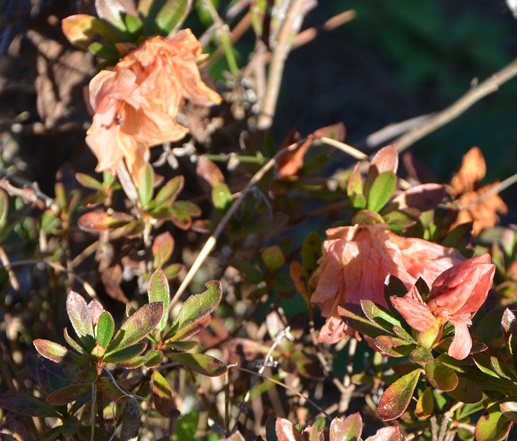
by Les Harrison | Feb 3, 2017
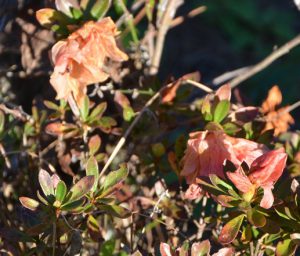
Photo caption: Local azaleas were prematurely blooming
This winter’s exceptional weather has deceived some popular springtime ornamental shrubs and fruit trees into flowering prematurely. Azaleas, for example, began blooming because of winter temperatures mush warmer than average.
There are number of variables which determine when a plant will bloom each year, including the sun, water, and air temperature. To understand why the plants bloom, there should be an understanding of “photoperiodism”, meaning the effects of light and darkness on some plant species.
Certain plants respond to the day length. Some are long day plants which flower in spring and summer, and some are short day plants flowering in fall and winter. Then there are plants which will bloom in any season, identified as day neutral plants.
Long and short day plants will not be directly affected by prevailing weather conditions. For example chrysanthemums, which are short day plant naturally bloom in winter.
These plants can be forced to bloom in summer by keeping them in a dark room for 12 hours a day for several weeks. Many nurseries supplying florist uses this technique and utilize greenhouses with blackout systems. They also use grow lights to produce early season blooms on spring/summer flowers sold for Valentine Day.
For those neutral day plants there is “vernalization”. These plants must be exposed to cold weather to some greater or lesser amount.
Most temperate fruit trees need exposure to cold temperatures. When winters are too mild or contain intermittent warmer periods, dormancy is prematurely terminated and bud break starts.
Most of the exposed buds of these fruit trees can survive freezing temperatures, but many of their flowers will be killed if exposed to a late arriving hard freeze or frost.
After the freeze most of the flowers may appear normal, but the center part of the flower where the reproductive organs reside are killed and result in no fruit formation. Covering plants in-bloom provides some freeze protection.
With a warm early winter, like December 2016, there has been irregular and premature flowering.
Another consideration is fruit trees or shrubs pruned too early winter. Warm weather combined with the pruning stimulates the growth of new shoots.
There is a hormone produced in lateral or terminal shoot buds which travels down the shoots inhibiting their growth. When the terminal shoots are pruned too early the growth inhibiting hormone is removed.
The warm days during winter may cause these newly pruned plants to form new shoots. The new growth is tender and very susceptible to freeze injuries. Pruning in late January or February will likely deliver the best results.
For shrubs like azaleas and gardenias, flower buds are set in summer, long before they can be identified by most people. Losing the buds, no matter the cause, after midsummer drastically decreases the number of flowers the following spring.
To learn more about the spring bloom for 2017, visit the UF/IFAS County Extension website
By: Gohar Umar, FAMU Extension Horticulture Specialist, and Les Harrison, Wakulla County Extension Director
Photo caption: Local azaleas were prematurely blooming













